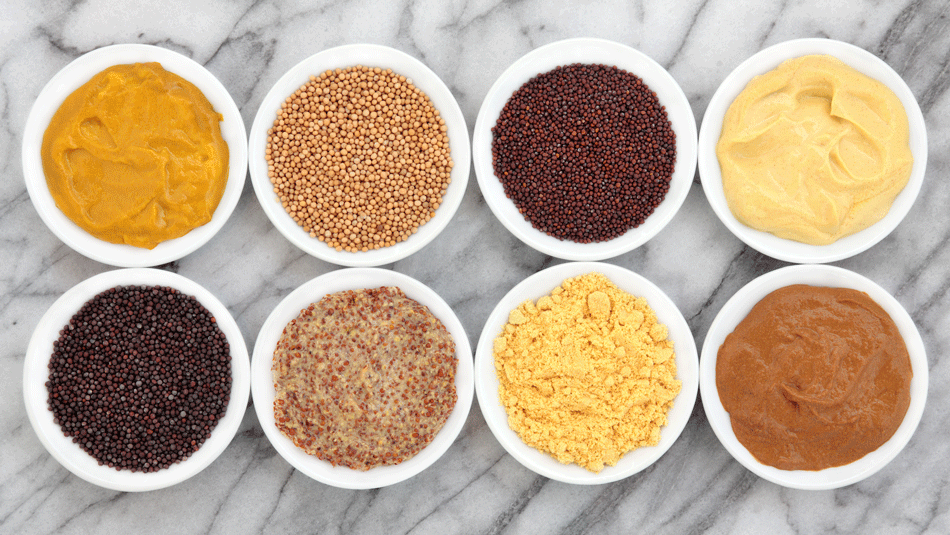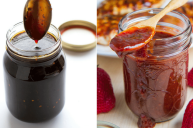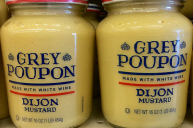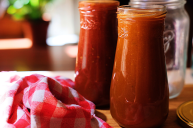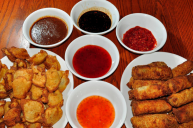We all know about yellow mustard: America's favorite condiment for hot dogs. Dijon mustard is pretty widely known, and I've been known to have a few different spicy mustard brands on hand at any given time. But what about all those other different types of mustard: is there a time and place for all of them? As it turns out: yes, and yes! Since we're heading into grilling season (aka summertime), we should get to know the these types of mustards. They all play an essential role in the backyard barbecue.
Whether it's for German-style potato salad or as a topping for our favorite burgers and brats, you'll definitely want to have some mustard on hand. So, let's dig in and take a look!
Mustard 101
At it's most basic, mustard is condiment that combines the seeds of the mustard plant with a liquid. When the seeds are broken and turned into ground mustard, all kinds of oils and enzymes are released. These oils are pungent and spicy - that's the plant's natural protection from insects and other pests. When those spicy mustard seeds are tempered with a liquid (like vinegar or wine), they mellow out and become the dressing we've come to know and love.
Type of Mustard Seeds
There's a difference between the types of mustard seeds and the types of mustard - we'll get to the latter in a minute. Let's take a moment to get to know one of the two basic building blocks of mustard (the seeds). Then, we can better understand how they make the spreadable condiment. The long and the short of it: there are two mustard varieties. Yellow seeds and brown seeds.
Yellow Mustard Seeds
https://www.instagram.com/p/BhMOkipl88y/
Yellow mustard seeds are responsible for most of our favorite brands of mustard. You may also see them in the store labeled as "white mustard seeds." These are the mildest of the mustard seeds, making them them the most common for traditional mustard spreads.
Brown Mustard Seeds
Brown mustard seeds are hotter and more pungent than the yellow (or white) varieties. They're sharp and assertive, which makes them the preferred type of mustard for most Indian and Asian cuisines. In America, they're most often blended with yellow seeds because they're too hot to handle on their own!
Types of Mustard
Now that we've gotten to know the types of mustard seed, let's dig into the condiments you can make with it. In addition to the mustards on this list, you might also hear the term "English mustard." This is a powder of ground yellow mustard seeds that's used in spice blends. Since it's not a spreadable mustard, we don't include it on the list below.
1. Yellow Mustard
This is the classic hot dog mustard - the quintessential American mustard. A bright yellow condiment (made from yellow seeds) that's not very spicy. It has a mellow but bright flavor that is made by combining ground yellow mustard seeds with lots of vinegar. If you're going to have one mustard in the refrigerator, this is the one. Use it for hamburgers, hot dogs, or to make Carolina-style barbecue sauce.
2. Honey Mustard
This sweet-and-tangy sauce is exactly what it sounds like - a 50/50 mixture of honey and mustard. The honey takes away the sharp mustard flavor and gives this sweet sauce a craveably-good aftertaste. This is my go-to mustard to use as a dipping sauce for chicken tenders or french fries.
3. Dijon Mustard
https://www.instagram.com/p/BhEfEikAK26/
Everyone knows about this one from the classic Grey Poupon commercials. It was first produced in France (Dijon, to be specific) but now it's made everywhere. Instead of using vinegar, Dijon mustard combines the seeds with low-acidity white wine.
Originally, it was made with a grape juice (made from unripe grapes called verjus) but today it's made with wine. That gives it a smooth flavor with very little spice. You can use it for everything, but I love Dijon for making vinaigrettes, sauces, aioli, and deviled eggs.
4. Spicy Brown Mustard
This yellow-and-brown mustard has a coarser texture than yellow mustard and it definitely has a spicier bite. It's usually combined with other spices - like ginger and nutmeg - to give it a nuanced flavor. If I had to pick a favorite mustard, this is the one. It's perfect for sandwiches (especially corned beef on rye) because it can stand up to the strong flavors of deli meats like roast beef.
5. Whole Grain Mustard
Like spicy brown mustard, whole grain mustards use yellow and brown mustard seeds. After the whole seeds are soaked, they're very lightly ground - just enough to give the condiment body. You can see individual seeds and they sort of pop in your mouth when you eat them.
This type is very spicy, and a little bit goes a long way. It's most popularly used on charcuterie plates because of it's sharp flavor and brilliant appearance.
6. Chinese Hot Mustard
I love to hold on to those little packages at the bottom of the Chinese take-out bag. These mustards are extremely spicy - I mean nasal-cleansing spicy! - because they're mixed with cold water first. That allows the heat to kick in more intensely than with hot water. Then, the heat is set with an addition of vinegar. It will set your mouth on fire, but somehow it's incredibly addictive and I keep going back in for more! This mustard is best enjoyed with egg rolls or wontons.
7. Beer Mustard
As the name indicates, beer mustard is a low-acidity mustard that uses beer in place of vinegar. Any type of beer can be used - from lagers to IPAs to stouts. You can use beer mustard in place of any other mustard if you want to add complexity to the dish. It goes especially well with pub pretzels!
Now that you're a mustard expert, lets make some sandwiches! These 15 healthy sandwiches that are so good, you'll look forward to your bagged lunch!

